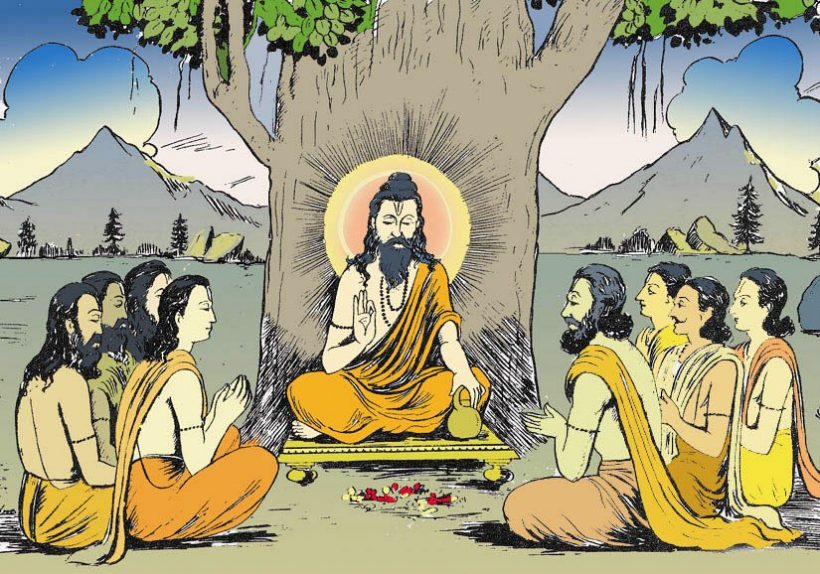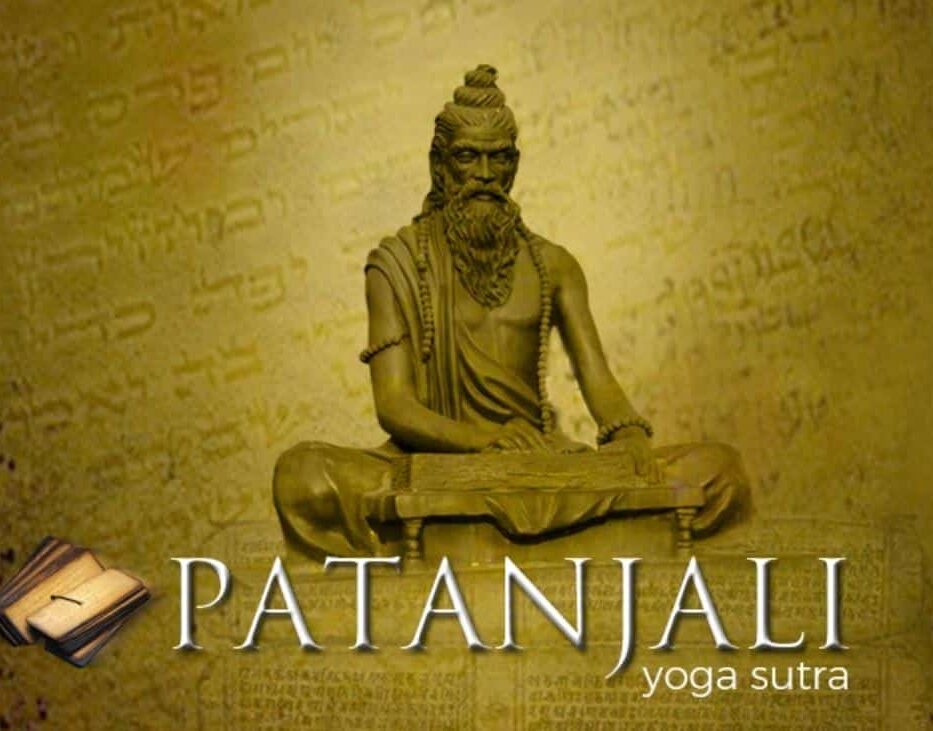THE SCIENCE OF YOGA
Origin and definition of yoga philosophy
Yoga is a spiritual science, also seen as a philosophical line, and its origin is a complex subject where several theories and legends try to explain it, but there is not much documented evidence. Even so, most scholars agree that yoga originated in ancient India, which is now Pakistan, more than five thousand years ago. However, studies increasingly show that Yoga is timeless; The more archaeologists discover traces of ancient civilizations, such as representations in artifacts, inscriptions and paintings that depict positions and practices similar to yoga, the more their antiquity is confirmed.

Its techniques for living a healthy, happy and holy life were developed during thousands of years through many civilizations, being passed down from generation to generation until reaching ours through the tradition of Parampara, which defines a traditional succession of masters and disciples that transmit knowledge in the richest way that is experienced in real time.
According to literary sources, it was the Rishis (ancient sages) who channeled the practice of yoga and brought this knowledge to the world. Rishi is a term for an accomplished and enlightened person, considered wise and seer who after intense periods of meditation realized the ultimate truth and infinite knowledge.

Primordial Yoga, known as Archaic Yoga, was closely linked to the ritualistic lifestyle of ancient Indians, based on Yogic teachings found in sacred Sanskrit scriptures. This style of Yoga revolved around meditative sacrifices with the aim of transcending the limitations of the mind through focusing on prolonged periods of time. When successful, the Yogi was gifted with a “vision” or experience of transcendental reality.

Around 200 BC to 400 AD, Patanjali organized the knowledge of yoga from older traditions, and synthesized a collection of 196 aphorisms, known as Sutras, on theory and practice, becoming a continuous guide over the centuries. The word sutra literally means "thread", where Patanjali transmits a “thread” of memory of all the knowledge of the practice and philosophy of Yoga based on the Puranas, Vedas and Upanishads. The Yoga Sutras provide the framework upon which all Yoga practiced today is based.

In the Yoga sutras, Patanjali describes that there are 8 "Limbs" of Yoga to reach the highest state of Samadhi, which is union with the Spirit, the highest state of consciousness. Each limb addresses different aspects of the practice, and one is connected to the other, that is, they merge with the practice, and can even be practiced simultaneously. As they are developed, they evolve each other, while promoting self-knowledge or self-realization to the practitioner. These limbs are known as 'Ashtanga Yoga' or The 8 Limbs of Yoga.
1 - Yama (Moral discipline)
2 - Niyama (Behavioral observances)
3 - Asana (Physical poses)
4 - Pranayama (Breathing techniques)
5 - Pratyahara (Sense control)
6 - Dharana (Concentration)
7 - Dhyana (Meditation)
8 - Samadhi (Complete Self-realization, Union with the spirit)
Yoga provides the integral union of the being - body, mind and spirit. Thus, considering the word yoga that originates from the biblical word “yoke”, which comes from the Sanskrit root “yuji” and means “to join” or “to unite”; Yoga is the union of the individual's unity of consciousness with Infinite Consciousness, Jīvātma and Paramātma. It is a science of self-realization providing direct experience of God. And as a consequence, its constant practice calms the turbulence of thoughts and the agitation of the body, which is what prevents us from knowing our true essence, in addition to bringing deep relaxation, concentration, mental tranquility, well-being, strengthening the body physical fitness and the development of flexibility. However, the definition of a yogi is a person who is fully supported by Supreme Consciousness.
The scientific methods of Yoga help the devotee to achieve his unity with the infinite. Yoga restricts the natural turbulence of thoughts, which, if not controlled, prevents a person from seeing their true nature, which is spirit. Therefore, as long as the human mind is filled with restless thoughts, there will be a universal need for yoga.
In theory, Yoga is not a practice, but a state of being. What we practice are techniques that lead us to that state of being, which is our true state. Therefore, yoga is also discovery, in the sense of removing what hides our vision, leading us to understanding our true identity. Thus, Yoga explores all your dimensions, nature, depth and creative potential as a human being. Its practice is necessary to expand physical and mental capabilities, and so that each person can understand why they are a human being and what it means to be a human being.
